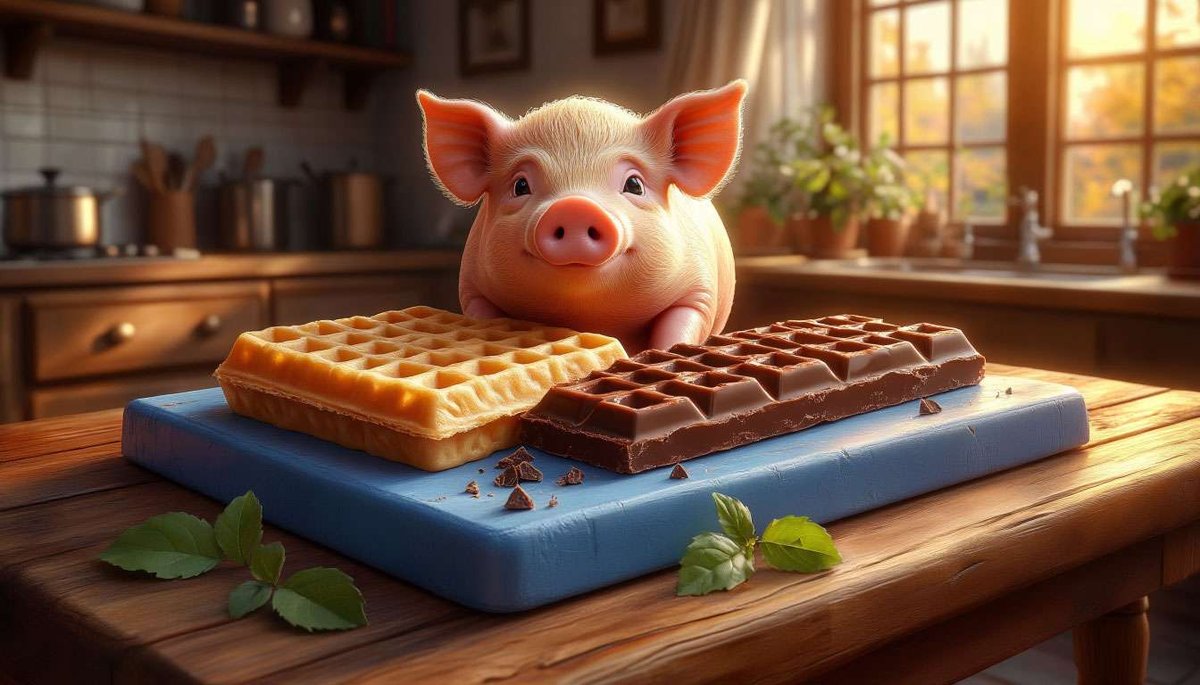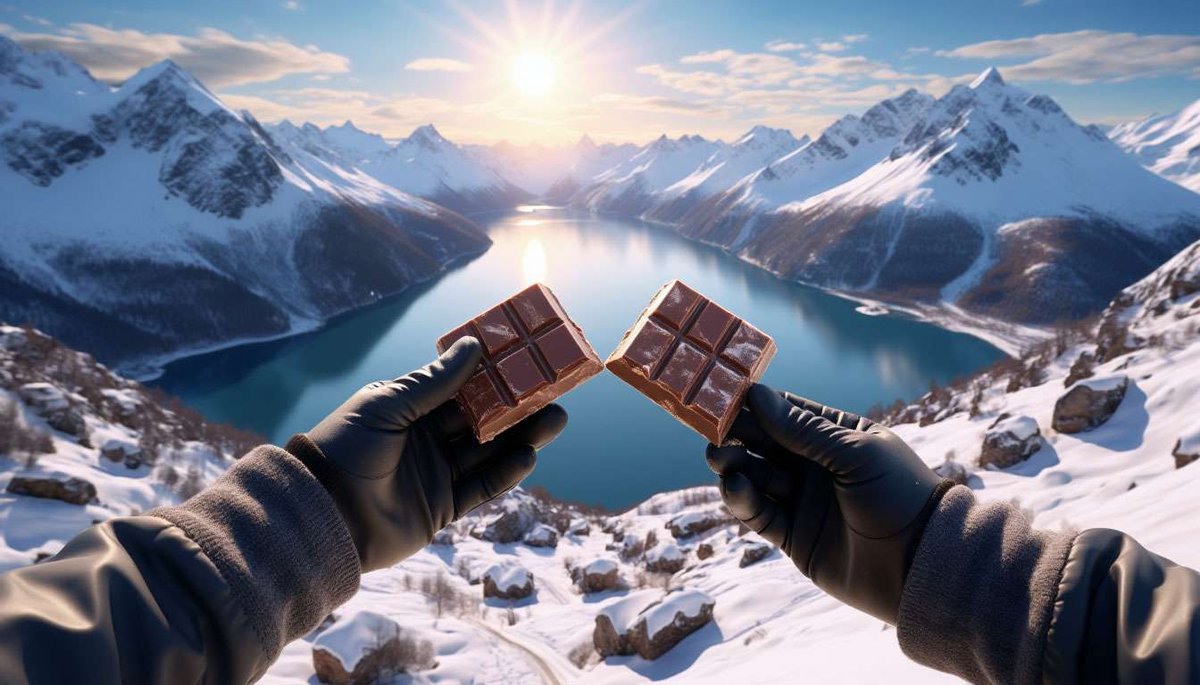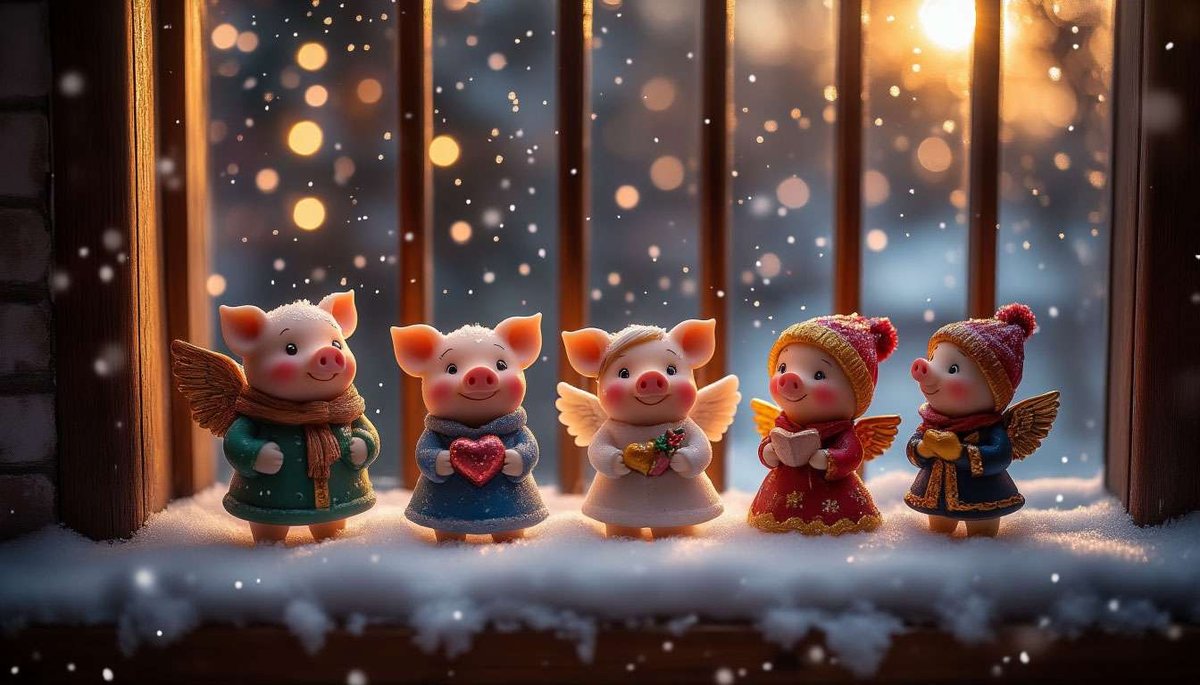Freia chocolate and Norwegian marzipan: the sweet soul of the North

The north can be harsh, but Norwegians know how to tame it with sweetness. For over a century, Freia milk chocolate and delicate Norwegian marzipan have accompanied the country's inhabitants: in their backpacks on mountain trails, in Christmas stockings and at Easter picnics. These treats are a piece of home that is easy to bring back from a trip. We will tell you how they came about, why they are considered part of the national identity, and how to choose the best ones.
How did the Freia factory come about and how does its chocolate differ from its European counterparts?
The Freia chocolate factory opened in 1889 in the Rodeløkka district of Oslo. Founder Johan Throne-Holst focused on high cream content: the recipe for Melkesjokolade milk chocolate used almost twice as much milk powder as the Swiss. Add soft artesian water from Oslo and carefully selected cocoa beans, and you get a velvety bar with a hint of caramel, which Norwegians call "the taste of childhood."
Why is the Kvikk Lunsj bar called "hiking chocolate"?
Kvikk Lunsj ("quick lunch") was launched in 1937. These are wafer sticks covered in milk chocolate and broken into four segments — convenient to share and eat on the go. During the ski tourism boom in the 1950s, the Freia factory began printing rules of conduct in the mountains ("Fjellvettreglene") on the wrapper. Since then, Kvikk Lunsj has been sold primarily during the Easter season, when Norwegians flock to the mountains: up to 50 million bars are eaten every year.

What other famous chocolate lines does Freia produce?
- Melkesjokolade — a classic milk chocolate bar, on sale since 1906.
- Firkløver — chocolate with crushed hazelnuts.
- Smil — bars with soft caramel in milk chocolate.
- Non Stop — crunchy chocolate dragees in coloured coating; a must-have ingredient for children's birthday cakes.
How does Norwegian marzipan differ from German or Spanish marzipan?
Norwegians use Valencia almonds and mix them in a ratio of about 52% nuts to 48% sugar, which is higher than many European standards. The nuts are ground to a slightly coarse texture, giving the marzipan a dense consistency and a pronounced nutty flavour. The main producers are Nidar (Trondheim, since 1912) and Bergenhus Marsipan (Bergen).
What sweet traditions are associated with marzipan in Norway?
- Julemarsipan — Christmas figures (pigs, hearts, angels) that are made at home or bought in boxes and given as gifts to bring good luck.
- Påske-marsipan are Easter eggs made of marzipan with a chocolate coating.
- Marsipankake is a sponge cake with cream and a thin layer of marzipan, popular at graduations and weddings.

Where can tourists buy the best chocolate and marzipan in Norway?
- Oslo: Freia Sjokoladebutikken brand store (Karl Johans gate) + tour of the Freia Hjertesjokolade exhibition factory.
- Trondheim: Nidar Favoritter boutique next to the historic factory; marzipan tasting with aquavit.
- Bergen: Bergenhus Marsipan & Sjokolade on Bryggen — handmade figurines.
- OSL/BGO airports: duty-free shops sell Freia Melkesjokolade + Kvikk Lunsj sets in gift boxes.
What drink pairings do Norwegian sommeliers recommend for local sweets?
- Freia Melkesjokolade — light filter coffee or light port wine.
- Kvikk Lunsj — dark Easter beer Påskeøl or non-alcoholic berry fruit drink.
- Nidar marzipan — dessert aquavit with cloudberries or Hardanger brut cider.
Can you make Norwegian marzipan at home?
Yes: pour boiling water over 200 g of blanched almonds, dry and bake for 5 minutes at 120 °C; grind with 180 g of powdered sugar, 1 tablespoon of glucose syrup and 2–3 drops of rose water. Knead the mixture until it has a plasticine-like texture, then refrigerate for 12 hours. Shape into figures, dip in melted Freia Melkesjokolade chocolate, and enjoy your homemade julemarsipan.
Freia chocolate and Norwegian marzipan are sweet chronicles of the country: from the bustling Karl Johan street to the quiet streets of Trondheim, from the ski slopes with Kvikk Lunsj in your pocket to Christmas Eve with a marzipan piglet. Bring home a bar of Melkesjokolade, a Kvikk Lunsj bar and a box of julemarsipan, and every bite will remind you of the clean northern air, the ringing of bells and the warm tradition of sharing sweets even on the coldest of days.





2 comments
Log in to leave a comment